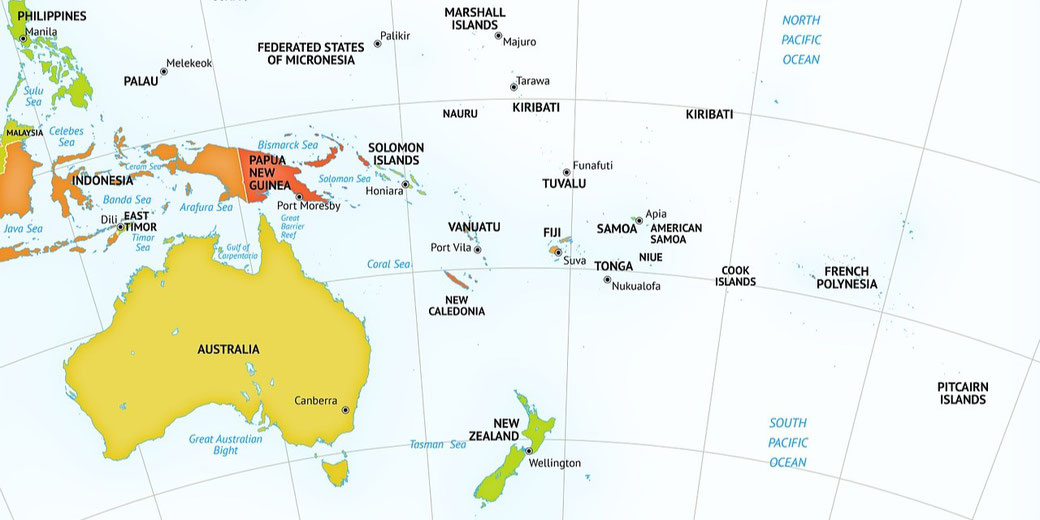The impact of ANZUS and SEATO on global politics

The ANZUS Treaty and SEATO are two key alliances that have played a significant role in Australia's diplomatic history.
The ANZUS Treaty, established in 1951 between Australia, New Zealand, and the United States, aimed to provide a mutual defense agreement within the Pacific region.
In a similar way, the SEATO agreement, signed in 1954 between Australia, France, New Zealand, Pakistan, the Philippines, Thailand, the United Kingdom, and the United States, sought to prevent the spread of communism in Southeast Asia.
The ANZUS Treaty
The ANZUS Treaty, signed on 1 September 1951, arose from the growing apprehension about the rise of communism, particularly following the communist takeover of China in 1949 and the start of the Korean War in 1950.
However, it was only ratified by the U.S. Senate on March 20, 1952, before officially came into force on April 29, 1952.
Although the treaty was not specifically formed as a response to a potential attack by the Soviet Union, it was intended to ensure peace and security within the Pacific region amidst the rising tensions.
Following the end of World War II, Australia and New Zealand grew increasingly concerned about the political stability of the Asia-Pacific region.
They proposed the idea of an ANZUS Treaty to the United States, which initially showed some reluctance.
Eventually, however, U.S. Secretary of State Dean Acheson agreed, which was a significant step in Australian history, as it was the first time Australia formed a political alliance without Britain.
The ANZUS Treaty was finally signed in San Francisco on 1 September 1951 and officially came into effect on 29 April 1952.
Its language is somewhat vague, focusing on consultation and action in the face of any threat to the territorial integrity, political independence, or security of the member parties in the Pacific.
Although ANZUS was not directly invoked, Australian and U.S. forces fought together in major American conflicts such as the Vietnam War (1955–1975).
In fact, the ANZUS Treaty has only been invoked once since its inception. In 2001, Australian Prime Minister John Howard pledged military support for the United States' 'War on Terror’ following the September 11 terrorist attacks by citing Article IV of the treaty, which calls for action in case of an armed attack.
To the surprise of many, New Zealand implemented a nuclear-free policy in 1984, which prohibited nuclear-armed or nuclear-powered ships from entering its ports.
Since the United States had a policy of neither confirming nor denying the presence of nuclear weapons on its naval vessels, this effectively meant all American naval vessels were denied access to New Zealand ports.
Then, in February 1985, New Zealand refused to allow an American destroyer, the USS Buchanan, into its ports.
The US viewed this as a breach of New Zealand's ANZUS treaty obligations and, on September 17, 1986, the United States declared that it is no longer bound to honour its ANZUS commitments to New Zealand.
Even without the participation of New Zealand, Australia and the United States continue to maintain strong bilateral security relations under the ANZUS framework, including defense cooperation, intelligence sharing, and joint military exercises.
The SEATO Agreement
The Southeast Asia Treaty Organization (SEATO) was a regional-defense organization that was signed on September 8, 1954, in Manila, Philippines, as part of the Manila Pact.
It officially came into effect on February 19, 1955, when the formal institution of SEATO was established in Bangkok, Thailand, and would last until June 30, 1977.
Its member countries were Australia, France, New Zealand, Pakistan, the Philippines, Thailand, Britain, and the United States.
While the SEATO agreement emerged during the Korean War, it was designed to counter the spread of communism in Southeast Asia broadly, rather than targeting specific threats from China or North Korea.
The treaty included clauses providing for mutual aid between member states.
Once formed, it responded to the rise of communism in Southeast Asia, especially in the context of events in Vietnam, Laos, and Cambodia.
A significant weakness of the SEATO agreement was its lack of a military arm to enforce its decisions, instead, it relied on the military forces of its member countries.
Due to the complexities of the political agreements between the nations in the Southeast Asian region and the geographical size of the region, SEATO was not as effective as originally envisioned.
In particular, the agreement faced criticism for its limited scope, lack of enforcement mechanisms, and lack of support from some Asian nations.
India and Indonesia openly criticized SEATO as a tool of Western imperialism, and they refused to join despite their geographical proximity and strategic importance in Southeast Asia.
Ultimately, SEATO effectively ceased to function in 1976 after Pakistan withdrew in 1973, and its dissolution was completed by 1977.
Why these two treaties were important to Australia
Both the ANZUS and SEATO treaties played critical roles in shaping the geopolitical dynamics during the Cold War era, particularly with regards to countering the spread of communism.
The ANZUS Treaty helped maintain the independence of Australia and New Zealand from the sphere of influence of communist powers, while the SEATO agreement sought to keep Southeast Asia free from communist control.
However, their effectiveness should be understood within the context of other influential factors during that era.
Further reading
What do you need help with?
Download ready-to-use digital learning resources
Copyright © History Skills 2014-2025.
Contact via email
With the exception of links to external sites, some historical sources and extracts from specific publications, all content on this website is copyrighted by History Skills. This content may not be copied, republished or redistributed without written permission from the website creator. Please use the Contact page to obtain relevant permission.





